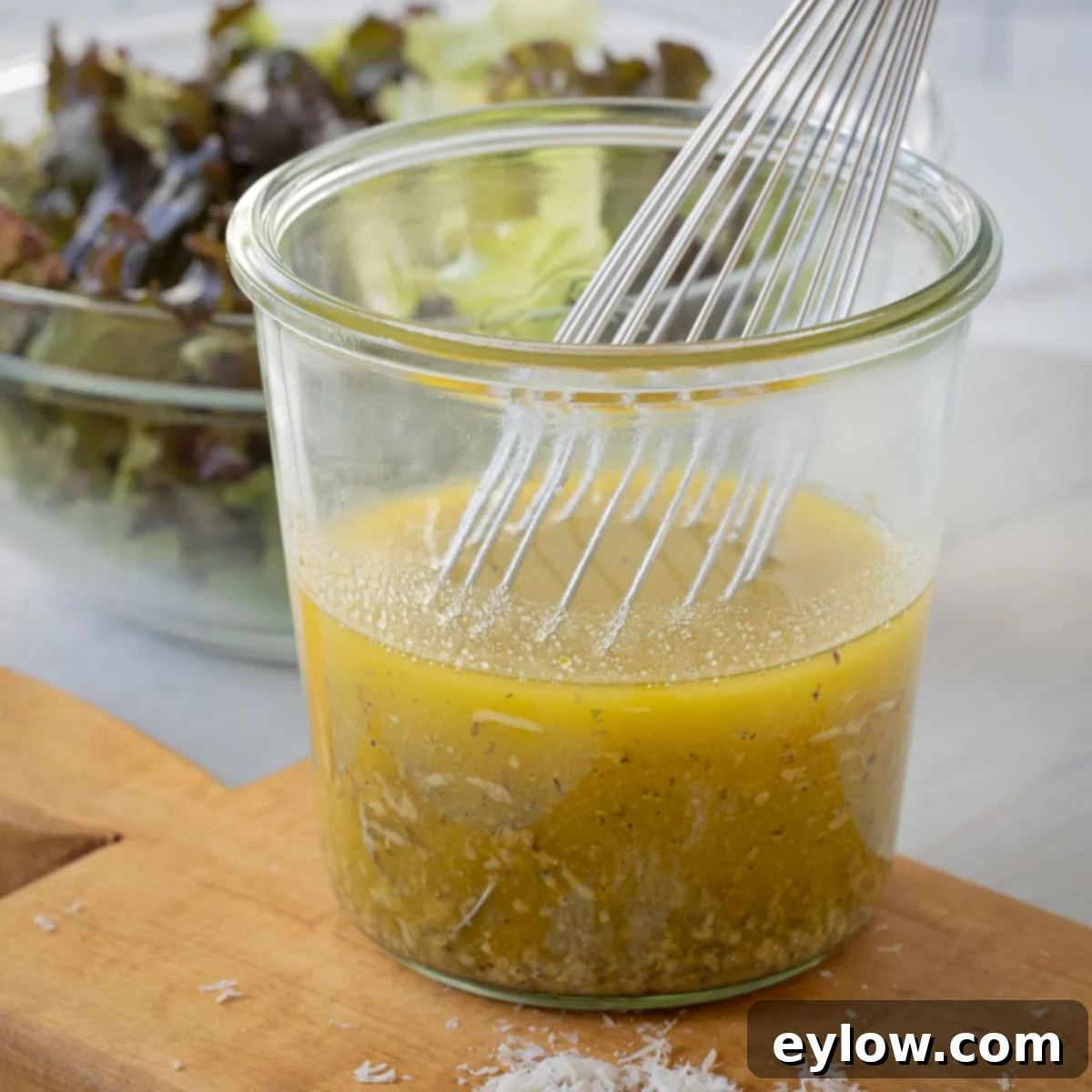Mastering Homemade Italian Salad Dressing: A Zesty & Healthy Vinaigrette Recipe
There’s nothing quite like the vibrant flavor of a homemade salad dressing to elevate any meal. Forget those store-bought bottles filled with questionable ingredients and bland taste. Crafting your own easy homemade Italian salad dressing, often known as an Italian vinaigrette, brings a burst of fresh, tangy, and savory notes right to your kitchen. Whether you’re tossing a crisp green salad, preparing a hearty cold pasta salad, or looking for a versatile marinade, this recipe ensures your dishes are infused with authentic, wholesome goodness. It’s simple, incredibly flavorful, and made with healthy, real ingredients – no dry seasoning packets required, just pure, delicious flavor you control.
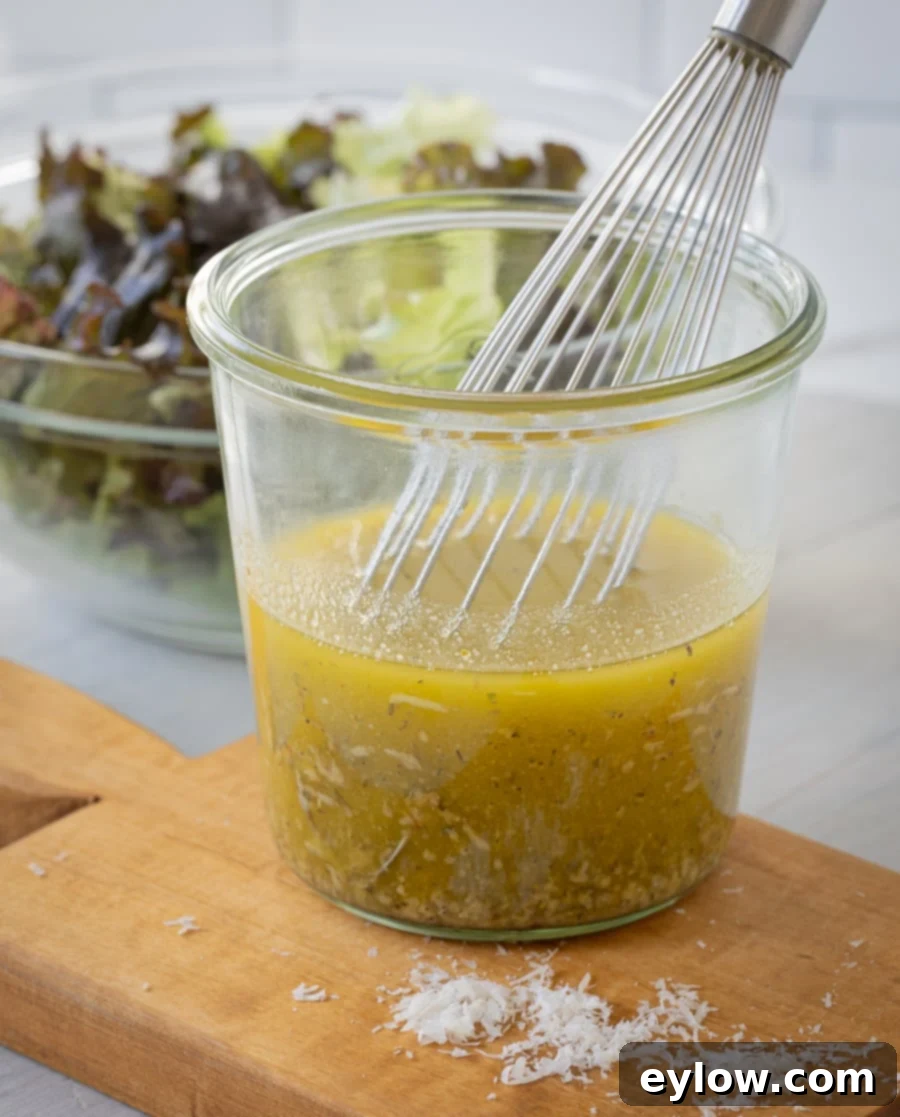
For many of us, the memory of Italian dressing often conjures images of shaking a packet mix with oil and vinegar. As a child, that was my dinner-time ritual – pouring ingredients into a cruet, adding the dry seasoning, and giving it a vigorous shake. It was a cherished taste of my youth. Now, I’m thrilled to share an updated, healthier, and even more delicious version of that classic. This recipe brings the nostalgic flavors back to life, but with the added benefits of fresh ingredients, superior taste, and the satisfaction of knowing exactly what goes into every drop. It’s truly a game-changer for your culinary repertoire.
[feast_advanced_jump_to]
Essential Ingredients for Your Perfect Italian Vinaigrette
One of the most rewarding aspects of making your own salad dressing is the complete control you have over every ingredient. This means you can customize flavors, adjust to dietary needs, and completely avoid artificial preservatives, unhealthy oils, and excessive sodium often found in commercial dressings. Each component in this homemade Italian dressing recipe plays a crucial role in creating its perfectly balanced, vibrant flavor profile.

- Quality Oil: The foundation of any great vinaigrette is the oil. For this Italian dressing, extra-virgin olive oil is undoubtedly the best choice. Its rich, fruity notes and robust flavor complement the herbs and vinegar beautifully, providing a smooth base. Ensure you choose a high-quality, cold-pressed extra-virgin olive oil for maximum flavor and health benefits. If you prefer a milder flavor or a different nutritional profile, unrefined avocado oil also works wonderfully, offering a neutral backdrop that lets other flavors shine.
- Bright Vinegar: Vinegar is what gives Italian dressing its signature tang and brightness. The acidity is essential for balancing the richness of the oil and awakening the palate. You have several excellent options here:
- Champagne Vinegar: Offers a delicate, subtle fruitiness.
- White Wine Vinegar: A classic choice, providing a crisp, clean acidity.
- Red Wine Vinegar: Brings a bolder, slightly more complex flavor profile.
- Apple Cider Vinegar (ACV): Offers a distinct fruity tang with a hint of apple, popular for its health benefits.
All of these vinegars will yield a delicious Italian dressing, so feel free to choose based on what you have on hand or your preferred flavor intensity.
- Parmesan Cheese: The king of cheeses, Parmigiano-Reggiano, is non-negotiable for that authentic, savory, salty, umami depth. Its finely grated texture disperses perfectly throughout the dressing, adding a layer of sophisticated flavor that transforms it from good to absolutely incredible. Always opt for a block of genuine Parmigiano-Reggiano and grate it yourself; pre-grated options often contain anti-caking agents and lack the fresh, pungent flavor.
- Dijon Mustard: Beyond its piquant flavor, Dijon mustard serves a crucial role as a natural emulsifier. It helps bind the oil and vinegar together, preventing them from separating and creating a creamy, smooth consistency. Use a good quality creamy Dijon mustard for the best results.
- Dried Italian Herbs: A robust blend of dried herbs is key to the distinctive Italian flavor. While a ready-made dried Italian seasoning blend is convenient and works perfectly, you can also create your own blend or use individual herbs like basil or oregano if that’s what you have. Traditional Italian seasoning typically combines thyme, marjoram, basil, oregano, sage, and rosemary, delivering an aromatic medley that is both comforting and vibrant.
- Flavorful Powdered Seasoning: Garlic powder and onion powder are indispensable for adding a concentrated punch of savory flavor. They integrate smoothly into the dressing without the raw bite that fresh garlic or onion can sometimes impart, ensuring a consistent and potent taste throughout.
- A Touch of Sweetness: While a savory dressing, a hint of sweetness is vital to balance the acidity of the vinegar and enhance the overall flavor complexity. A tiny amount is all that’s needed to round out the dressing and prevent it from being overly sharp. You can use granulated sugar, a monk fruit blend for a sugar-free option, honey, maple syrup, keto simple syrup, or agave syrup. Choose the sweetener that best fits your dietary preferences.
- Salt and Pepper: These fundamental seasonings are essential for bringing all the flavors into harmony. Use sea salt and freshly ground black pepper, adjusting to your taste.
Please refer to the detailed recipe card below for precise measurements of each ingredient.
Customizing Your Italian Dressing: Ideas and Alternatives
One of the best things about making dressing at home is the endless possibilities for customization. Don’t be afraid to experiment with these substitutions and variations to tailor the Italian dressing to your exact preferences and dietary needs.
- Mustard Texture: For a more rustic texture and an extra layer of flavor, consider swapping some of the creamy Dijon for a whole grain Dijon mustard. The visible mustard seeds add a delightful pop and visual appeal.
- Flavored Olive Oils: Take your dressing to the next level by using a flavored olive oil. Infused oils like extra virgin lemon olive oil or basil extra virgin olive oil can introduce new aromatic dimensions. Other exciting options include chili-infused olive oil for a subtle kick or roasted garlic olive oil for deeper savory notes.
- Fresh Garlic: If you love the pungent taste of fresh garlic, substitute the garlic powder with finely zested or minced fresh garlic cloves. One small clove, finely grated with a microplane, usually equals about ¼ teaspoon of garlic powder. Remember that fresh garlic has a stronger, more raw flavor, so adjust to your preference.
- A Zesty Kick: For those who enjoy a bit of heat, a pinch or two of dried red pepper flakes (often called pizza pepper) will transform this into a zesty Italian dressing. Start with a small amount and add more to taste, especially if you’re serving it to a diverse group.
- Low Sodium Options: To keep the sodium content down, simply skip adding extra salt. The Parmesan cheese already contributes some salinity (approximately 76mg per tablespoon), so taste the dressing before adding any additional salt. You might find it perfectly flavorful without it.
- Vegan or Dairy-Free Alternative: If you’re looking for a cheesy flavor without dairy, nutritional yeast is your secret weapon. Add a tablespoon or two to the dressing. It provides a distinct savory, umami flavor reminiscent of cheese, making it an excellent substitute for Parmesan in vegan or dairy-free versions.
- Taming the Tang: If your dressing turns out a bit too sharp or tangy for your liking, a little extra agave nectar, a dash of sugar, a bit of monk fruit blend, or a touch more maple syrup can mellow the acidity. Add it gradually, tasting as you go, until you achieve the perfect balance.
- Low Histamine Friendly: For those following a low histamine diet, it’s best to skip the Parmesan cheese. You can still enjoy a delicious dressing by opting for apple cider vinegar or white vinegar, as red wine vinegar and some aged cheeses can be higher in histamines.
Chef’s Tip: Achieving finely grated Parmesan cheese or fresh garlic is effortless with a microplane zester. This inexpensive and incredibly versatile kitchen tool is a must-have. Use it for effortlessly zesting citrus, grating hard cheeses, finely mincing raw garlic, grating chocolate for desserts, or even pulverizing whole spices like nutmeg. Its fine blades create a light, fluffy texture that integrates beautifully into dressings and sauces.
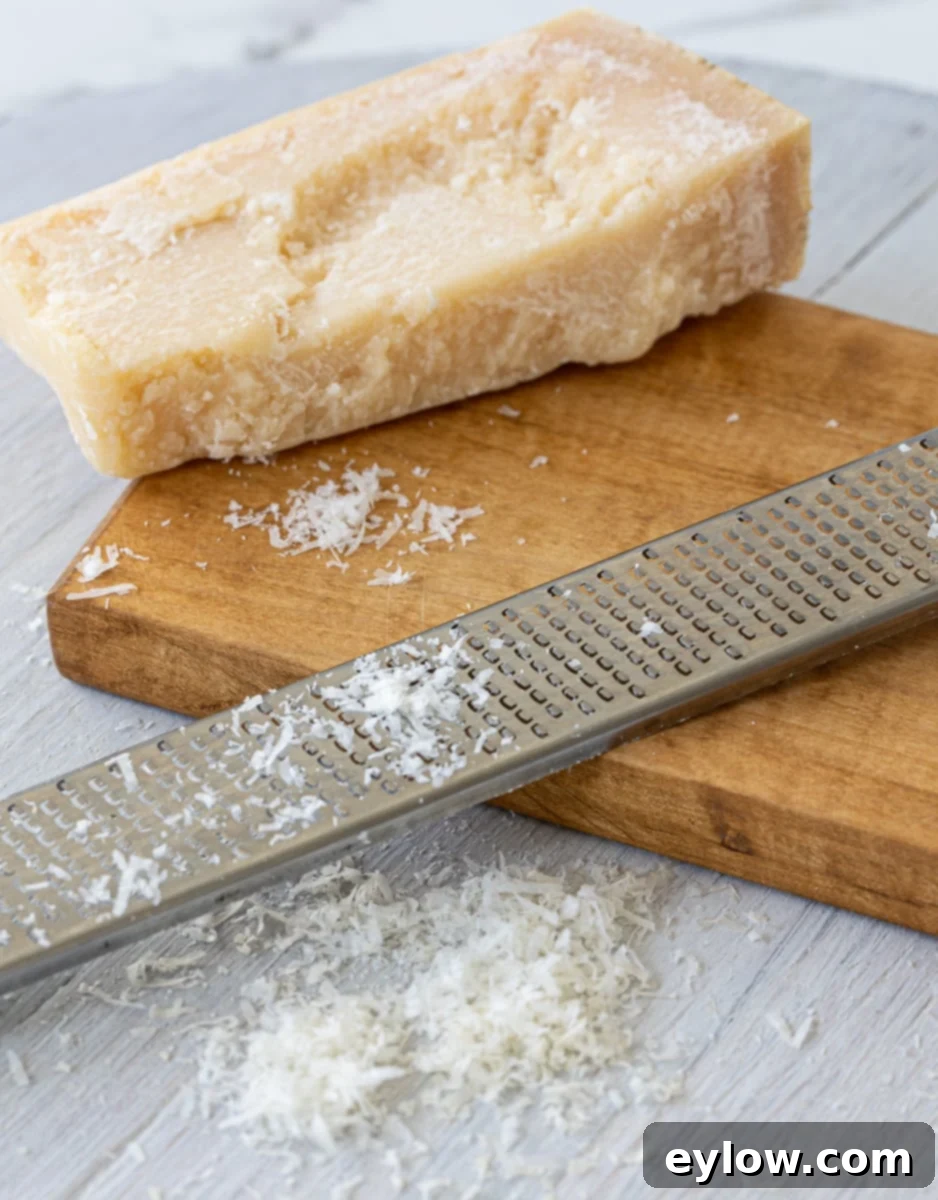
Simple Steps to Prepare Your Homemade Italian Dressing
Making this Italian dressing is incredibly straightforward, requiring minimal effort for maximum flavor. For the most robust and harmonious taste, it’s recommended to prepare the dressing at least 30 minutes before serving. This allows the dried herbs ample time to rehydrate, releasing their full aromatic potential and infusing the oil and vinegar with their wonderful essence.
The simplest method involves combining all the ingredients in a jar or a bottle equipped with a tight-fitting lid. Once all components are added, simply give it a good, vigorous shake until everything is thoroughly combined and the dressing appears emulsified. The mustard will assist in preventing separation. For larger batches, or if you prefer an ultra-smooth consistency, a blender or food processor can be used to quickly whisk all the ingredients together until well emulsified.
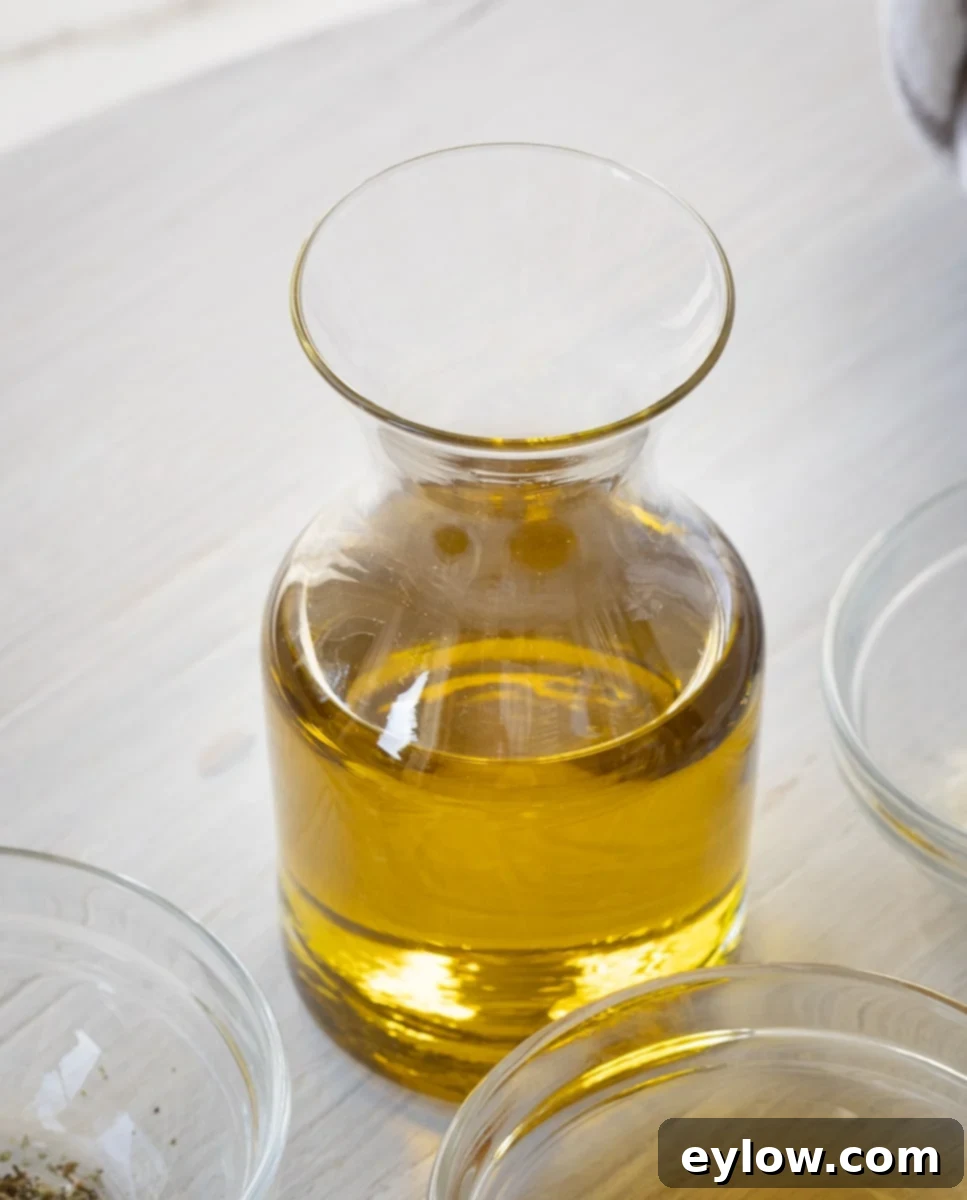
Chef’s Note: Why go to the trouble of making your own dressing when bottled options are so readily available? The primary reason is health and ingredient quality. Many mass-produced grocery store dressings unfortunately rely on low-quality, highly processed oils like soybean oil or canola oil (also known as rapeseed oil). These industrially processed oils are often extracted using harsh chemicals and solvents and are frequently derived from genetically modified (GMO) crops. They can contribute to inflammation and lack the beneficial nutrients of healthier fats. By making your dressing at home, you choose wholesome, unrefined oils like extra virgin olive oil or avocado oil, ensuring a cleaner, healthier, and far more delicious product. It’s a simple swap that makes a big difference for your well-being and your taste buds.
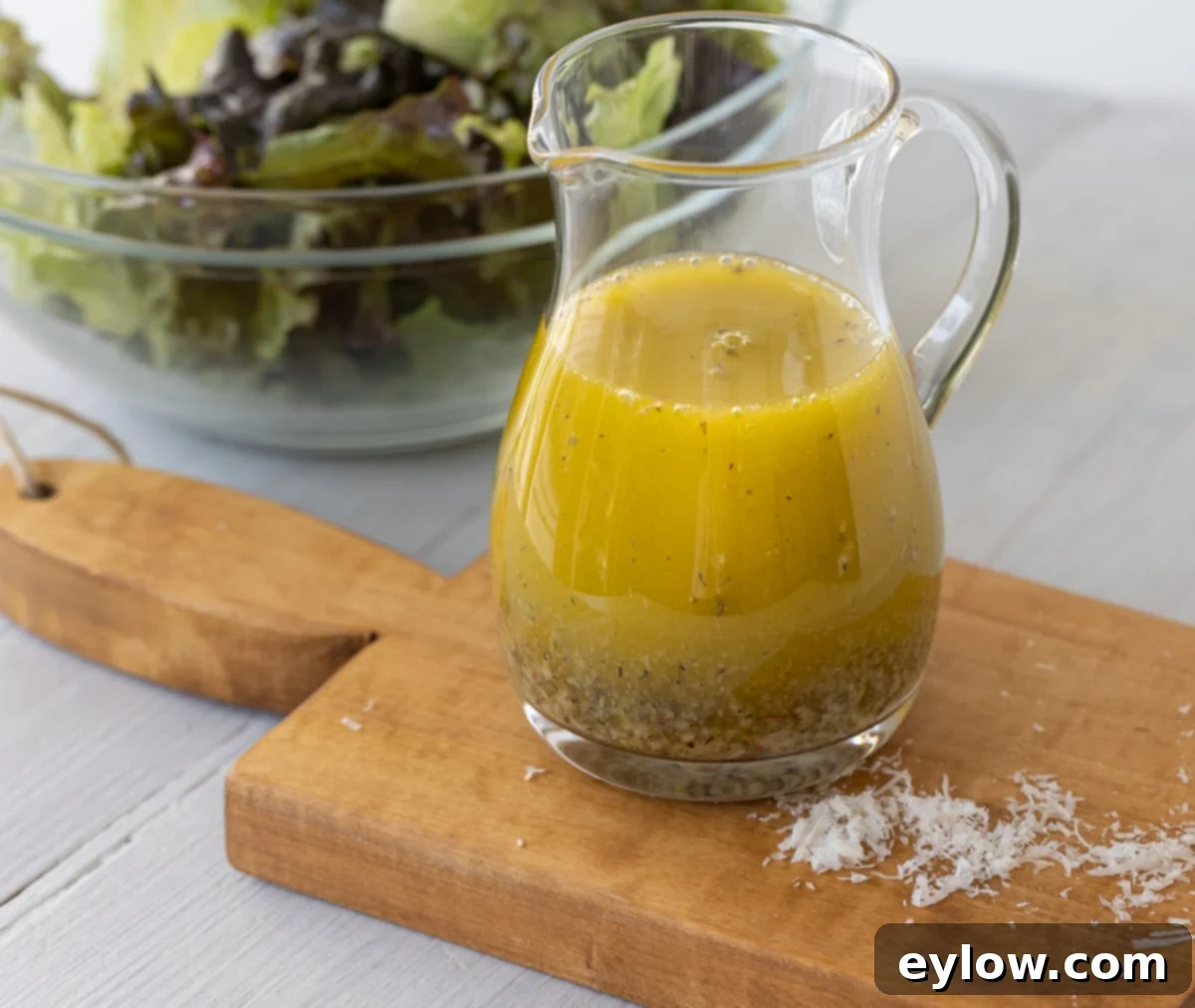
Versatile Serving Ideas for Your Homemade Italian Dressing
While homemade Italian salad dressing is, of course, a perfect complement to a vibrant green salad, its versatility extends far beyond traditional greens. This zesty vinaigrette is a true workhorse in the kitchen, a recipe you’ll want to have in your permanent arsenal for its multipurpose applications. Here are just a few ideas to inspire you:
- Classic Green Salads: Drizzle generously over your favorite mixed greens with fresh vegetables like cucumbers, tomatoes, red onions, and bell peppers.
- Cold Pasta Salads: It’s an ideal dressing for cold pasta salads, adding bright flavor to cooked pasta, cherry tomatoes, olives, feta cheese, and bell peppers.
- Dynamic Marinade: This dressing makes an excellent marinade for various proteins. Use it to infuse chicken breasts, shrimp, fish fillets, or even tofu with incredible Italian flavors before grilling, baking, or pan-searing. The vinegar helps tenderize, while the oil and herbs carry the flavor deep into the protein.
- Roasted or Grilled Vegetables: Toss warm roasted vegetables like broccoli, asparagus, zucchini, or bell peppers with the dressing for a flavorful side dish. It’s also fantastic drizzled over freshly grilled vegetables, adding a finishing touch of brightness.
- Grain Bowls: Elevate simple grain bowls made with quinoa, farro, or couscous by stirring in a few spoonfuls of this dressing. Add roasted vegetables, chickpeas, and fresh herbs for a complete meal.
- Sandwiches and Wraps: Spread a thin layer of the dressing on bread or tortillas before assembling sandwiches or wraps for an extra layer of flavor.
- Bruschetta or Caprese: A light drizzle over freshly toasted bruschetta or a classic Caprese salad (tomatoes, mozzarella, basil) adds an authentic touch.
- Potato Salad Alternative: For a lighter, tangier potato salad, use this Italian dressing instead of a mayonnaise-based one.
To keep your homemade Italian dressing fresh and flavorful, store any extras in an airtight container, such as a sealed jar or bottle, in the refrigerator. It will typically last for up to a week, ensuring you have a healthy and delicious option ready whenever you need it.
Frequently Asked Questions About Homemade Italian Dressing
The best oils for homemade dressings are those that are minimally processed and rich in beneficial fats. Extra virgin olive oil is often considered the gold standard for its flavor and heart-healthy monounsaturated fats. Unrefined avocado oil is another excellent choice, offering a neutral flavor and a high smoke point, making it versatile. It’s crucial to steer clear of “vegetable oil,” which is typically a highly processed blend of industrial oils like soybean, corn, or canola oil. These oils are often extracted using harsh chemicals, are high in inflammatory omega-6 fatty acids, and are largely derived from genetically modified crops. If you have “vegetable oil” in your pantry, it’s generally best to toss it and invest in healthier alternatives. Always look for oils that are naturally extracted, cold-pressed, or expeller-pressed, and made without chemical alteration to ensure you’re getting the healthiest options.
In culinary terms, the distinction between Italian dressing and a general vinaigrette often comes down to semantics and specific ingredient profiles. Fundamentally, they are both oil-and-vinegar-based dressings. A classic vinaigrette is often defined as a simple emulsion of oil and vinegar, sometimes with salt, pepper, and a touch of mustard. Italian dressing, however, typically incorporates a specific blend of Italian herbs and spices, garlic, onion, and often Parmesan cheese, giving it its characteristic savory and aromatic flavor. While a basic vinaigrette might be more fluid, the addition of Dijon mustard in Italian dressing acts as a natural emulsifier, giving it a slightly creamier consistency and helping to keep the oil and vinegar from separating. So, while all Italian dressings are a type of vinaigrette, not all vinaigrettes are Italian dressing.
For optimal food safety and to preserve freshness, homemade Italian dressing should not be left on the counter at room temperature for extended periods. This is especially true if your dressing contains ingredients like Parmesan cheese or fresh garlic, which are perishable. Refrigeration is a must to prevent bacterial growth and maintain the quality and safety of the dressing. Store it in an airtight container in the refrigerator immediately after preparation. Properly refrigerated, it will maintain its quality and safety for about one week.
When stored in an airtight container in the refrigerator, your homemade Italian dressing will typically last for up to one week. The fresh ingredients, particularly the Parmesan cheese, necessitate refrigeration. If you omit the cheese and use only shelf-stable ingredients (though it wouldn’t be quite “Italian” without Parmesan!), it might last a bit longer, but refrigeration is still recommended for any oil and vinegar emulsion to preserve flavor and prevent spoilage.
To achieve a perfectly emulsified, creamy dressing that doesn’t separate, the key is the mustard. Dijon mustard acts as a natural emulsifying agent. When combining, slowly drizzle the oil into the vinegar-mustard mixture while continuously whisking or blending. This gradual addition and constant agitation allow the oil to disperse into tiny droplets within the vinegar, creating a stable emulsion. A tight-lidded jar shaken vigorously or a blender on low speed works wonders for this process.
Discover More Delicious Dressing Recipes
If you’ve enjoyed crafting this homemade Italian dressing, you’ll be delighted to explore the wide array of other delicious salad dressing and vinaigrette recipes available on this site. Many are featured as standalone recipes, while others are integral components of fantastic salad creations. Dive into the salad category to find inspiring recipes like a vibrant strawberry vinaigrette, a bright orange vinaigrette, and many more unique and flavorful options to enhance your meals.
- Caesar Salad Dressing Without Anchovies
- Creamy Lemon Tahini Dressing
- Blueberry Vinaigrette
- Healthy Chicken Salad Recipe with Ginger Salad Dressing
⭐️Did you Make This Recipe?
If you tried your hand at making this delightful homemade Italian dressing, we’d love to hear about your experience! Please take a moment to add your comment below and share your feedback. Your insights are incredibly valuable and help other readers. If you absolutely loved it, please consider leaving a 5-star rating! Your ratings make a significant difference.
📖 Recipe

Homemade Italian Salad Dressing
Sally Cameron
Pin Recipe
Ingredients
- ⅔ cup extra virgin olive oil
- 3 tablespoons champagne or white wine vinegar sub apple cider vinegar
- 1 tablespoon very finely grated Parmesan cheese
- ¾ teaspoon Dijon mustard
- ¾ teaspoon dried Italian seasoning blend sub basil, oregano,
- ¼ teaspoon garlic powder
- ¼ teaspoon onion powder
- ⅛ teaspoon sea salt
- ⅛ teaspoon ground black pepper
- ⅛ teaspoon sugar or monk fruit blend sub honey, maple, keto simple syrup, agave
- 1 pinch red chili flakes (pizza pepper)
Instructions
-
Add all listed ingredients to a jar with a tight-fitting lid. Alternatively, combine in a bowl and whisk vigorously until well combined.
-
For larger batches or an extra smooth emulsion, use a blender or food processor to combine the ingredients.
-
Allow the dressing to rest for at least 30 minutes before serving to allow the flavors to meld and the dried herbs to rehydrate fully.
